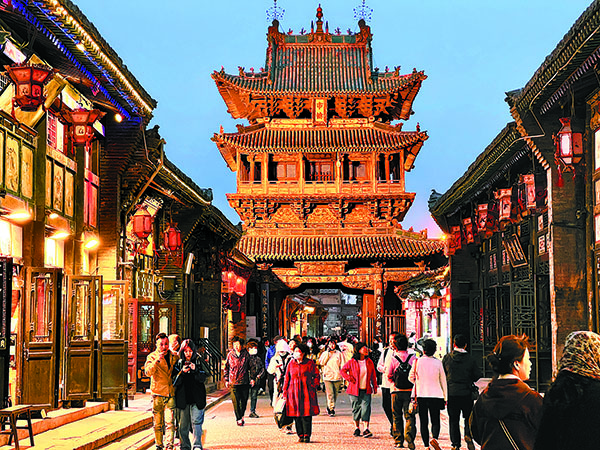

TAIYUAN — Yemeni student Al-Sayaghi Waleed Mohammed Saleh Ahmed and his Chinese friends spent part of the May Day holiday learning an archaic method of transferring money at China's earliest bank in Pingyao, an ancient city in North China's Shanxi province.
"There are numerous cultural relics in China's ancient cities that have inspired me to learn more about the country's past," said Ahmed.
China has dozens of well-preserved ancient cities that in recent years have become primary destinations for curious tourists eager to experience their thriving cultures.
Shanxi's ancient city of Xinzhou, with a history of more than 1,800 years, boasts over 500 shops, many of which are time-honored and can provide services related to cultural relics, including catering, accommodation and sightseeing.
During the recent five-day May Day holiday, Xinzhou was host to more than 400,000 visitors, raking in revenues of approximately 15 million yuan ($2.13 million). Nearly 40 percent of the tourists were from other provincial-level regions.
"The tourist flow never ends. During the peak season, tourists waiting in a line for dinner easily crowded the courtyard of my restaurant," said Wang Guodong, who runs an eatery in Xinzhou.
May 19 marked this year's China Tourism Day, inspiring multiple ancient city scenic spots across the country to tap into local cultural resources amid the tourism boom.
Cultural elements are the major attraction for visitors to ancient cities. As important purveyors of the country's intangible cultural heritage, ancient cities are stepping up preservation and restoration efforts in conjunction with their booming tourism development.
An ancient county in Taiyuan, provincial capital of Shanxi, has established 12 independent institutes for the study and research of such traditional cultural heritage items as movable-type printing and local opera and shadow puppetry in a bid to better develop and hand down the ancient arts and crafts to a new generation.
Liu Sai and his family from East China's Shandong province have been to many ancient cities in Shanxi during vacations. "The quaint environment, intangible cultural heritage exhibitions and on-site activities allow my kids to learn about and be deeply touched by China's traditions," Liu said.
Last year, to promote the protection of cultural relics, the National Cultural Heritage Administration issued a document on encouraging and supporting social forces to participate in the utilization and protection of cultural architecture.
"With this document, we can better protect and develop historical relics in the ancient city," said Su Yawei, manager of the Taiyuan Ancient County scenic area. The county plans to introduce nongovernmental capital investment of 240 million yuan to continue construction of a large-scale restoration center for cultural artifacts.
Geng Yeqiang, a professor at the School of Economics and Management of Shanxi University, said ancient cities, as carriers of local culture and economy, form a cultural tourism circle that bolsters their protection and development. This process also effectively boosts local economic growth and the preservation of cultural relics.
"Cultural relics protection departments, the tourism sector as well as social capital and the like should strengthen their cooperation to promote the development of this emerging economic model," Geng said.
"When a modern city embraces its old past, not only the local culture and history can be passed on, but the tourism boom is also better channeled," Su added.